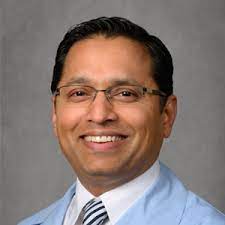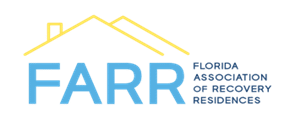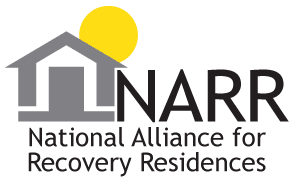Neuroscience Of Addiction And Recovery
The term “Addiction” to experts is a type of disease and not a moral failing. Addiction is a chronic and relapsing disease, described as an uncontrollable condition of the brain. With continued drug seeking and use, the harmful consequences and lasting reversal of the mind can no longer identify right from wrong. This article is geared toward understanding the neuroscience of addiction and how it can impact a patient’s recovery.
There are many myths related to addiction. Studies concerning addiction were made through the years in an attempt to curb and completely eradicate addiction. Psychiatrists and psychologists extended their addiction research into a person’s brain to see how it works. Even the government has fought this menace but seemed futile.
Understanding how the addicted brain works and changes may help society see a brighter future. And to make it work, full scientific knowledge of how the human brain interacts when addicted needs to be delved into.
Several treatments and clinical programs were developed over the years. Each one aims to help find a lasting cure for addiction.
Neuroscience research on drugs helps determine the brain’s reaction towards dependence and the use of abusable drugs. It aids in assessing the response of the neural substrates that cause a person vulnerable to addiction. Neuroscience looks into how drug abuse and dependence impact a person clinically and how society handles drug addiction.
Neuroscience research also aids in knowing the science of addiction, which can equip people with information to treat drug dependence. Understanding drug addiction on a clinical level can improve psychosocial interventions and advanced pharmacotherapies for drug dependence victims. Research on drug abuse leads to the discovery of neuroendocrinology and the neurobiology of stress. Plus, the detection of opioid peptides, stress transmitters, neurochemical control of stress hormones, and the reproductive hormone release.

Neuroplasticity and the Brain
Neuroplasticity supports all learning and makes the brain volatile. It facilitates the person’s mind to recover from various congenital disabilities, improve neurological deficits, reverse psychological patterns, and recover from injuries. When the brain is damaged, other regions may function in the injured area. Looking deeper, it is essentially the body’s electric wiring.
The human mind is exceptionally resilient to develop permanent learning, similar to playing a musical instrument or learning a new language. It also makes it easy for the brain to recover from a stroke, birth abnormalities such as autism, ADD and ADHD, pull out of depression and addiction, and counter OCD. To this age, borders of neuroplasticity are not yet known.
There are two types of neuroplasticity, namely:
- Functional plasticity means that the brain can shift function from one area of the brain to another.
- Structural plasticity is the power to change brain structure that arises from learning.
Neurons, synapses, vascular cells, and glial cells are physical structures that develop where plasticity exists.
Addiction and the Brain
The human brain reacts to addiction based on several factors, such as the type and number of drugs used, the regularity of use, the amount of use, and the addiction stage. A cocaine user will have a euphoric feeling because cocaine is psychoactive and targets the brain’s area that controls pleasure and motivation. The dopamine burst is a chemical that causes euphoria and makes a person crave for more.
Frequent use now becomes abuse. The user becomes addicted and continues drug use until such time that help comes along. As the chemical affects the brain, physical symptoms may appear, together with the substances on their nervous system. Symptoms such as rapid heartbeat, paranoia, nausea, hallucinations, and other extreme sensations wherein the person will have little control.
Mistaken Reward System
The brain is an expert reward detector. An addicted brain mastered prioritizing the reward of using drugs. Therefore, addiction is an irresistible repetition of satisfaction or “reward,” even though the consequences are life-threatening. The essential compensation in the old days is on a subconscious level. It sends humans to look for survival opportunities – food and sex, shopping, drugs, and smartphones, to name a few.
Addiction and hunger for drugs are complicated because of the exchange of chemicals in the brain. The dopamine neuron transfer is now in the heart of the human mind; it transmits chemical messages, signals, and synapses responsible for reward-seeking attitudes. It becomes an essential factor in neuroplastic change during dopamine use.

Neurobiology of Use, Misuse, and Substance Addiction
These chronic disorders are subject to recurrence, with genetic, developmental, behavioral, social, and environmental factors. Such conditions make it difficult for patients to comply with and follow treatments.
Research in addiction and substance abuse showed that this is motivated by the adjustment in the brain neurons. It has also helped reduce the negative attitudes that link substance use disorder and support treatment in good health care programs.
Wires and Signals in the Human Brain
The brain is both simple and complex. Compared to a computer, the brain is a connected system called neurons. These neurons use chemical and electrical signals to exchange information called action potentials. Then, the nervous system sends information to nerves, muscles, or gland cells. It adapts and makes physical changes based on what a person does and likes to do.
Drug abuse research on neurobiology and neuroscience proved to be very useful in integrative neuroscience. The nervous system’s interaction and the endocrine system detect opioid peptides, stress transmitters, reproduction, and release hormones to the body that control neurochemical hormones. Brain neurons send messages to the whole body.
Evolution enabled the brain’s connections and thinking ability. Neuroplasticity has created man’s preference for whatever will make him happy and fulfilled. And this includes addiction. Drug abuse and addiction is a chronic brain disorder molded by influential biosocial factors.
The human brain is a collection of massive neurons ranging from 10 billion to 10 trillion. It can communicate with other neurons in a specific and intricate way. Therefore, the process of communication happening in the brain is called synaptic transmission. In other words, whatever is in mind interprets the “you,” what you think and feel, and the “who are you.”
The brain is one crucial body organ that controls emotions, temperature, breathing, coordination, and decision-making. But under the influence of harmful chemicals, it can alter the primary function, which is to think right. The brain gives rewards when something brings pleasure. One good example is when a person continues to take drugs; the brain releases feel-good emotions, creating a drug abuse cycle.
Addiction can be a compulsive habit that forms around anything that will give pleasure to the body and mind. It includes a neuroplastic change inside the brain. Computer games, Facebook, pornography, and drugs create sensitized feelings about life experiences or substances that the body desires.
After a person goes through the sensitized feeling, the feel-good transmitter discharges into the brain. People under the influence of drugs also experience the sensitized feeling of joy and euphoria. A shot of dopamine makes the person happy and now becomes essential to neuroplasticity, which boosts behavior.
Substance addiction is not the only form of addiction. The conventional assumption that substances or drugs are the sole cause of addiction is now just a belief, a myth. Behavioral addiction is slowly becoming known and accepted. Examples of behavioral addiction are gambling, risky sex, food, the internet, mobile devices, and shopping.
Psychiatric facilities and establishments now embraced the concept that addiction is feasible without the ingestion of an addicting substance. Researchers now try to resolve what behaviors pass as a behavioral addiction. Another unofficial list of behavioral addictions is internet gaming and kleptomania, and they prove to be worthy of more study by researchers.
Psychiatry is a sub-specialty in medicine that helps evaluate, check, and treat complex brain disorders. It delves into brain problems emerging from abuse and addiction to substance and non-substance forms.
Craving for substances and non-substances is a sign of addiction. The brain chemicals called dopamine transmit signals across synapses and are liable for granting reward-seeking behavior. And, therefore, a must for neuroplastic change.
Dopamine alters the control of movement. And scientists acknowledge its pull of stimulus to reward the body, and its surge produces anticipatory dopamine. The mind is an expert when it comes to detecting rewards. It can quickly classify and seek compensation, mostly if the activity poses a risk or danger to the body.
Scientific Treatment in Addiction
Recovery needs significant modifications in the thoughts, feelings, and behavior of the one involved. No method is “fit to all sizes.” Treatments should harness and encourage modern research, and neuroplasticity and neuroscience prove to be successful for others. And here are some:
- Contemplative practices are the use of meditation and mindfulness for a successful rehab program. Detaching from thoughts and calming self changes the brain. These mental tools teach the person to separate the moment and space between feelings and desires—the interval of urge and action boost neuroplasticity and newly learned behaviors.
- Intellectual Behavior therapy is talk therapy that tries to connect directly to a person’s thoughts and emotions toward their actions to modify unacceptable behaviors.
- Transcranial Magnetic stimulation – it’s a procedure that uses repetitive magnetic energy on specific regions in the brain responsible for mood control. The therapy promises a future in treating addiction.
Additional Protective Factors
Addiction is not a disease. It is a chronic condition deeply rooted in the human brain. When asked if “Can a person’s addiction be treated?” The answer is a big, “Yes!” The latest research on addiction has developed a research-based treatment method that can help stop addiction and continue to live everyday lives.
Compared to other chronic diseases such as asthma and heart disease, there is no cure, but it is manageable. Treatment involves correcting the disruptive effects of drugs in the brain and returning to their everyday lives. Treatment involves prevention principles intended for parents, educators, and community leaders to deliver research-based prevention programs for addictive patients.
Listed below are the risk and protective factors in the proper delivery or treatment for persons with addiction.
- The prevention program should lower the risk factors that may include age, relationship with gender, ethnicity, culture, and environment, and the proper timing of implementing an intervention program.
- The program should consist of all forms of drug abuse and other substance combinations ( tobacco, alcohol, marijuana, or heroin), the use of inappropriate exploitation of legal substances (inhalants, pain relievers), and OTC or prescription medicines.
- Classifying the type of addiction must target the abuse problem to identify and strengthen the protective factors.
- Hindrances and prevention programs should target the population( age, gender ethnicity) for the program’s effectiveness.
Neuroscience of Addiction and Recovery


Dr. Alam is an internationally renowned psychiatrist with academic affiliations with Northwestern University and University of Illinois, Chicago where he completed his residency training. He has been a principal investigator for over forty studies and has been involved in research leading to the approval of most psychiatric medications currently on the market. He is the founder of the Neuroscience Research Institute which continues to conduct research on cutting edge medication and interventional psychiatry. Dr. Alam is a Distinguished Fellow of the American Psychiatric Association and the American Society of Addiction Medicine. He has won several awards and has been featured extensively on radio and television.










